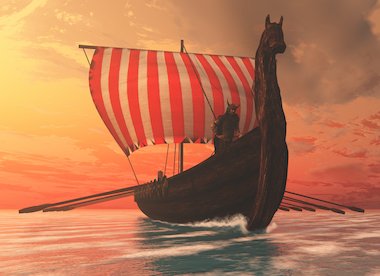The Vikings: topic summary
Add to My Folder
Our handy topic summaries can be used to support homework, as well as providing helpful collections of related resources for teachers to use in school or for parents to use for home learning.

The Vikings originated from parts of Denmark and Norway. They were highly skilled seafarers whose longships, powered by sails and oars, travelled not only across the North Sea to Britain but to other parts of Europe and even as far as Asia. Their navigating skills allowed them to travel long distances across oceans and their shallow-draft ships permitted them to travel inland along rivers like the Rhine and the Danube. Some explorers travelled west to Iceland and Greenland and one of their leaders, Leif Ericson, is believed to have reached the shores of North America in around 1000 CE. The Vikings were not only looking to find and conquer new lands but were also successful traders who swapped furs, iron, tin and leather for silk, spices, wine and precious metals.
The first Viking raids on Britain came around 790 C.E. Originally these were ‘hit and run’ raids but gradually they began to stay longer, take over land and establish settlements. Known for their powerful weapons and ferocious fighting tactics, the Vikings became a feared race as they plundered churches and monasteries of precious metals and jewellery and killed anyone who stood in their way. They even stole Bibles and religious manuscripts and sold them back to their owners in order to raise extra money. Once settled, the Vikings became proficient farmers and many place names in Britain today come originally from Viking words, for example, Whitby (by-village) and Skegness (ness-headland).
Published 28 July 2020
Reviews
You need to be signed in to place a review.